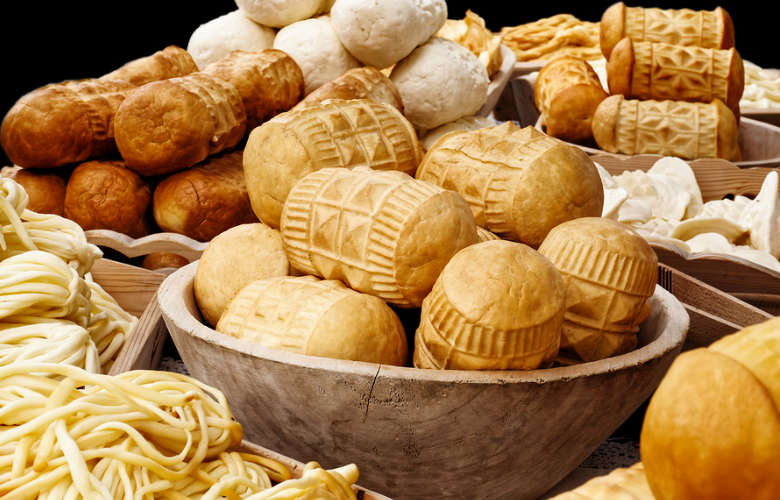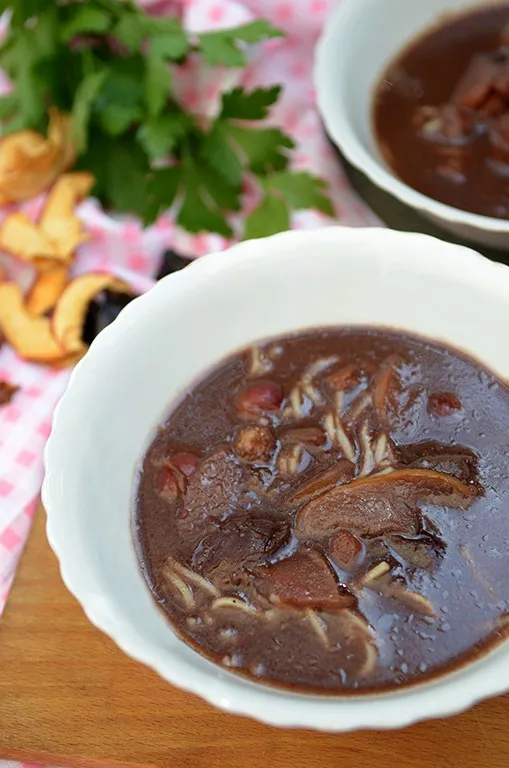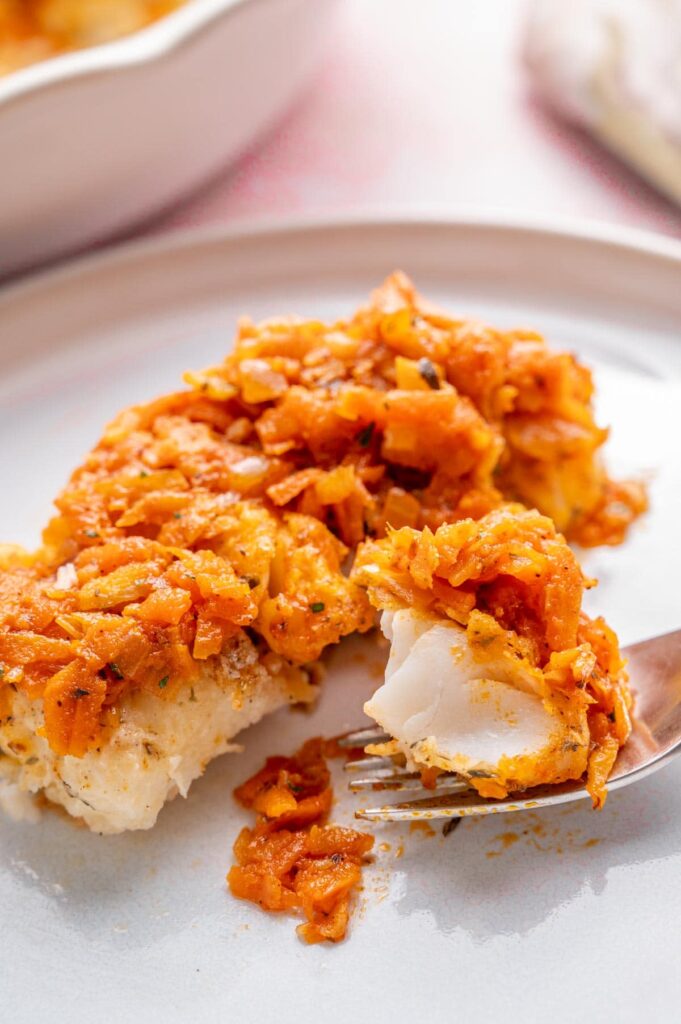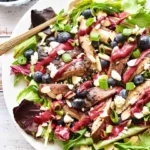Polish cuisine is rich with tradition, featuring an array of hearty and delicious dishes that are perfect for any occasion. From savory soups to mouth-watering pastries, Polish recipes offer a unique blend of flavors that reflect the country’s history and culture.
Whether you’re looking to explore new culinary territories or reconnect with your heritage, these recipes will provide you with an authentic taste of Poland. Each dish carries a story and a taste that has been passed down through generations, making your cooking experience both enjoyable and meaningful.

1) Pierogi
Pierogi are traditional Polish dumplings filled with various ingredients like mashed potatoes, cheese, or meat. They are a beloved comfort food in Poland and often enjoyed during holidays and special occasions.
To make pierogi, start by mixing flour, salt, eggs, and water to form a dough. Knead the dough until it becomes soft and elastic, then let it rest for about 30 minutes.
Once the dough is ready, roll it out and cut it into circles. Place a small amount of filling in the center of each circle. Fold the dough over and seal the edges by pinching them together.
Boil the pierogi in salted water until they float to the top, which takes about 3-4 minutes. You can then sauté them in butter to add a golden, crispy texture.
Popular fillings include potatoes with cheese, sauerkraut with mushrooms, and sweet fillings like berries. The variety of fillings means there is a pierogi for everyone’s taste.
Pierogi are not only delicious but also a simple way to bring a taste of Poland into your kitchen. Whether you stick with a classic filling or try something new, pierogi are sure to be a hit.

2) Bigos
Bigos, also known as Polish Hunter’s Stew, is a traditional dish in Poland that many families enjoy. It’s made with a mix of sauerkraut, fresh cabbage, and various meats. The stew develops rich flavors when cooked slowly.
To make Bigos, start by chopping onions and smoked bacon into fine cubes. Fry the bacon first, then use the bacon fat to fry the onions.
Add the fried onions and bacon to sauerkraut. Chop the mixed meats, like pork shoulder and sausage, and fry them in lard or oil. Transfer the meat to the pot with the sauerkraut.
You can also include mushrooms in the mix for more depth. Juniper berries, bay leaves, and peppercorns are often ground or crushed and added for seasoning.
Some recipes suggest soaking dried mushrooms in hot water until they soften before adding them. You might also use red wine to deglaze the pan, enhancing the stew’s flavor.
Cook everything together slowly, allowing the flavors to meld. If needed, add a bit more water during cooking to keep the stew moist.

3) Żurek
Żurek, also known as Polish Sour Rye Soup, is a flavorful and comforting dish. It has a unique tangy taste from the sour rye starter called “zakwas.” This soup is often enjoyed during Easter but can be served year-round.
To make Żurek, you first prepare the sour rye starter. Mix rye flour with water and let it ferment for 3-4 days. Once ready, this mixture gives the soup its distinct sour flavor.
The base of the soup is usually a vegetable broth. You boil ingredients like carrots, onions, celery, and leeks in water. For extra depth, add bay leaves and allspice berries during the cooking process.
Next, you need to fry some diced onions and bacon. Once cooked, add sliced sausages and garlic. Transfer this mix to the pot with the broth. Pour in the sour rye starter and marjoram, and let it cook together for about 30 minutes.
Some recipes suggest adding a few spoonfuls of cream at the end. This step helps balance the flavors, making the soup richer and creamier. Serve Żurek hot, often with boiled eggs and crusty bread on the side.

4) Gołąbki
Gołąbki, also known as Polish stuffed cabbage rolls, are a beloved traditional dish. These delicious rolls are typically made by wrapping a mixture of minced meat and rice in cabbage leaves. They are then cooked in a tomato-based sauce.
To prepare gołąbki, first, boil the cabbage to soften the leaves. This takes about 10 minutes. Remove the core and outer leaves before boiling.
For the filling, combine cooked rice, minced meat (usually pork or beef), and finely chopped onions. Some recipes also add bacon or garlic for extra flavor. Season the mixture with salt and pepper.
Take the softened cabbage leaves and cut out the thick vein in the middle. Place a spoonful of the meat mixture on each leaf and roll it up, tucking in the sides to create a neat package.
There are two common methods to cook gołąbki: baking and simmering. For baking, place the rolls in a casserole dish, add a mixture of broth and tomato puree on top, and bake at 360°F (180°C) for about 45 minutes. For simmering, arrange them in a pot, cover with broth and tomato sauce, bring to a boil, then reduce heat and simmer for 45-50 minutes.
Serve gołąbki warm, often with extra tomato sauce on top. This hearty dish is perfect for family gatherings and is sure to please everyone at the table.

5) Placki Ziemniaczane
Placki Ziemniaczane, or Polish potato pancakes, are a beloved dish in Poland. They are made from grated potatoes and onions mixed with eggs, flour, salt, and pepper.
To make these pancakes, start by peeling and grating potatoes and an onion. Drain any excess liquid from them.
In a bowl, beat an egg and stir in some flour, salt, and pepper until the mixture is smooth. Add the grated potatoes and onion to this mixture and combine well.
Heat some oil in a frying pan over medium-high heat. Once the oil is hot, spoon in about 1/4 cup of the potato batter. Flatten it slightly to form a pancake about 1/4 inch thick.
Fry the pancakes for about 3-5 minutes on each side until they are golden brown. Make sure to not turn the pancake too early, or it might stick.
Once they are done, place the pancakes on a plate lined with paper towels to drain any excess oil.
Placki Ziemniaczane are best enjoyed hot. You can serve them with sour cream, applesauce, or any topping of your choice. This dish is a simple yet tasty part of Polish cuisine.

6) Sernik
Sernik is a classic Polish cheesecake. It’s a popular dessert with a smooth and creamy texture.
You start with a pastry crust, usually made from a rich dough. This forms the base of the cheesecake.
For the filling, you’ll need farmer’s cheese. Grind the cheese well. You can use a meat grinder, blender, or even a potato ricer.
Once the cheese is ready, mix it with sugar, eggs, and vanilla extract. Some recipes also add lemon zest for extra flavor.
After blending the mixture, pour it into the crust. Bake it at 350°F (175°C). The baking process takes about 55 to 60 minutes.
Don’t open the oven door during the first hour. This helps the cheesecake set properly.
Once baked, let the cheesecake cool slowly. Leave it in the oven with the door open for about 15 minutes.
After it cools down, refrigerate before serving. This helps achieve the best texture and flavor.
Enjoy your Sernik with fresh fruits or a dusting of powdered sugar.

7) Barszcz
Barszcz, also known as Polish borscht, is a beloved soup in Polish cuisine. It’s known for its deep, vibrant color and rich, earthy flavor.
To make Barszcz, start by preparing the broth. Combine beets, carrots, celery, leeks, onions, and garlic in a pot. Add water to cover the ingredients. Add bay leaves and peppercorns. Bring it to a boil, then reduce heat and let it simmer.
While the broth cooks, dry mushrooms can also be added. Soak them in hot water and add them to the pot. This adds a deeper flavor to the soup.
Once the vegetables are tender, you can strain them out if you prefer a clear broth. Add vinegar, sugar, salt, and pepper to balance the flavors.
Barszcz is often served with delicate mushroom-filled dumplings called uszka. This combination makes for a filling and comforting meal. You can also enjoy it with a slice of bread or as part of a larger meal.
This classic soup is enjoyed especially during Christmas Eve dinner in Poland, but it can be prepared year-round for a delicious and hearty dish.

8) Kielbasa
Kielbasa is a type of Polish sausage that is popular for its rich flavor and versatility. You can find it in both fresh and smoked varieties. This sausage is made from pork, and sometimes beef, seasoned with garlic, marjoram, and other spices.
To prepare kielbasa, you can boil, grill, or fry it. Boiling is a simple method. Just place the sausage in a pot of water and simmer for about 10 minutes until heated through. If you prefer a crispy texture, grilling or frying is best.
Kielbasa works well in many different dishes. You can add it to soups, stews, and casseroles. It’s also delicious with cabbage and potatoes. For a quick meal, sauté sliced kielbasa with onions and peppers.
This sausage is often featured in Polish recipes during holidays and family gatherings. It adds a savory taste to traditional dishes like Bigos, a hearty hunter’s stew.
Using kielbasa is a great way to bring authentic Polish flavors to your kitchen. Whether it’s the main star or an added ingredient, its distinctive taste makes any dish special.

9) Rosół
Rosół is a classic Polish chicken soup, known for its clear broth and comforting taste. It is made using simple ingredients like chicken, vegetables, and noodles.
Start by washing your chicken and peeling vegetables such as carrots, parsnips, and celery. Burn an onion on an open flame to give the broth a rich color.
Place the chicken and vegetables in a large pot and cover them with water. Slowly bring the soup to a boil. Skim any foam or impurities that form on the surface to keep the broth clear.
Let the soup simmer for 2-3 hours. This slow cooking ensures the flavors meld together perfectly. Strain the broth using a fine mesh sieve to remove solids.
Serve Rosół with fine egg noodles or kluski dumplings. You can also add chopped chicken meat and garnish the soup with fresh parsley for added flavor.

10) Makowiec
Makowiec is a traditional Polish poppy seed roll that is popular during holidays and special occasions. This dessert features a sweet yeast dough filled with a rich and aromatic poppy seed filling.
To make the dough, you will need warm milk, egg yolks, melted butter, all-purpose flour, instant yeast, sugar, and salt. First, mix the warm milk with sugar and yeast. Let it sit for a few minutes.
Next, combine flour, egg yolks, and the milk mixture. Knead the dough until it is smooth. Cover the dough and let it rise in a warm place until it doubles in size.
For the filling, poppy seeds are essential. Cover them with boiling water and let them sit for a few hours or overnight. This softens the seeds and enhances their flavor.
After soaking, drain and grind the poppy seeds. Combine them with sugar, vanilla, and other desired ingredients like ground almonds or citrus zest. The filling should be thick and fragrant.
Roll out the dough into a rectangle. Spread the poppy seed filling evenly over the dough. Carefully roll the dough into a log shape, ensuring the filling is enclosed.
Place the rolled dough on a baking sheet and let it rise again. Once risen, bake until golden brown. Let the makowiec cool before slicing. Enjoy your homemade Polish poppy seed roll!

11) Szczupak Po Polsku
Szczupak Po Polsku is a traditional Polish dish made with pike fish. This recipe is known for its simplicity and flavor.
To start, you combine the pike with vegetables and dry seasonings in a pot. Add enough water to cover everything. Boil gently for 15 to 20 minutes until the fish flakes.
While the fish cooks, melt butter in a skillet. Add chopped eggs, lemon juice, dill, salt, and pepper. Cook for 5 minutes, stirring often.
When the fish is finished, place it on a warm platter. Spoon the egg and lemon topping over it. This dish often pairs well with rice or potatoes. Szczupak Po Polsku can also be part of a traditional 12-course meal known as Wigilia. Enjoy the blend of flavors in this Polish classic.

12) Kaszanka
Kaszanka, also known as Polish blood sausage, is a traditional dish in Poland. It’s made from a mix of pig’s blood, buckwheat or barley, and spices. The sausage is usually pre-cooked and has a dark, almost black color.
To prepare baked Kaszanka, you can start by removing the sausage from its casing. Dice it up and set your oven to 390°F (200°C). Wrap the diced Kaszanka in aluminum foil with some grated horseradish. Bake for 15-20 minutes.
If you prefer a quicker method, you can fry Kaszanka. Chop some onions and fry them in a pan with oil. Add the diced sausage, season with salt and pepper, and cook until it’s heated through.
Kaszanka is often served with hearty bread, raw onions, mustard, or horseradish. This dish has a rich, savory flavor and pairs well with tangy condiments.
Whether baked or fried, Kaszanka makes a hearty and delicious meal.

13) Oscypek
Oscypek is a traditional smoked cheese from Poland. It comes from the Podhale region, known for its Tatra Mountains. This cheese is made from salted sheep milk, which gives it a unique flavor.
Authentic oscypek is spindle-shaped with a golden hue. To prepare it, start by slicing the cheese into half-inch pieces. You can pan-fry or grill them.
For pan-frying, heat a pan with butter. Fry each side of the cheese for 2-3 minutes until it turns golden brown. For grilling, cook the slices until they have a nice golden color.
Traditionally, oscypek is served with a sweet topping. Many enjoy it with cranberry preserves or jam. This mix of salty and sweet flavors makes it a favorite among cheese lovers.
If you can’t find real oscypek, some stores sell commercial versions. These might not be as authentic, but they can still give you an idea of the taste.
Adding oscypek to your recipes can bring a unique taste of Polish cuisine to your table. Whether fried or grilled, this cheese is a delightful treat.

14) Faworki
Faworki, also known as Angel Wings, are a classic Polish dessert. They are light, crispy pastries that are usually dusted with powdered sugar. These treats are often enjoyed during holidays and special occasions in Poland.
To make Faworki, you start with a dough made from flour, egg yolks, and a bit of cream or yogurt. Some recipes also add a touch of vodka or apple cider vinegar to the dough. This helps the pastries become crispier.
After making the dough, you roll it out very thin. Then, you cut it into strips. Each strip gets a slit in the middle, and one end is pulled through the slit to form a twist.
Next comes frying. You heat oil or lard to about 356°F (180°C) in a large pot. The Faworki need to be fried for 30 to 60 seconds on each side until they turn light golden. Make sure to fry only a few at a time to avoid overcrowding.
Once fried, the pastries are drained on paper towels. While they are still warm, you sprinkle them generously with powdered sugar. This gives them their signature sweet finish.
Enjoy Faworki fresh for the best taste and texture. They are perfect with a cup of tea or coffee.

15) Czarna Polewka
Czarna Polewka, also known as Czernina, is a traditional Polish soup. This dish is made from duck blood mixed with broth. It offers a unique flavor that combines sweet, sour, and savory elements.
To prepare this soup, you first cook a broth from duck, vegetables, and spices. Onions are often charred before adding them for extra depth of flavor.
After the broth is ready, you add a mixture of duck blood and vinegar to prevent the blood from coagulating. Some recipes also include dried fruits or tart cherries, giving it a unique sweetness.
Flour is sometimes mixed with cold water and added to thicken the soup. The resulting dish is rich and complex, often served with noodles or dumplings.
Czarna Polewka holds a special place in Polish culture. It was once served as a symbol of rejection during marriage proposals. This historical significance adds to its charm as a traditional recipe.
This soup is not commonly found outside Poland, making it a rare and special treat. Its preparation requires specific ingredients and careful attention to detail, rewarding you with a rich and memorable dish.

16) Hunter’s Stew
Hunter’s Stew, also known as Bigos, is a traditional Polish dish. It’s known for its rich flavors and hearty ingredients. This stew is often made with a mix of different meats, including pork, beef, and sometimes venison.
You will need to prepare the ingredients ahead of time. Soak dried mushrooms in hot water for at least 20 minutes. Dice the pork and beef into bite-sized pieces. Season the meat with salt and pepper.
In a large pot, heat oil and brown the meat in batches. This helps to develop a deep, savory flavor. Remove the meat and cook some bacon until it’s crispy.
Add the soaked mushrooms, saving the liquid. Chop the mushrooms and add them to the pot. Add chopped onions and caramelize them for extra sweetness. Then, combine all the ingredients, including the meat, mushrooms, bacon, and reserved mushroom liquid.
Pour in beef broth to cover the ingredients. Add spices like bay leaves, allspice, and juniper berries. Bring the stew to a boil, then simmer on low heat for at least two hours. Stir occasionally to prevent sticking.
For best results, let the stew rest overnight in the fridge. This allows the flavors to meld together. Reheat before serving. Hunter’s Stew is perfect for cold days and pairs well with rye bread.

17) Kogel Mogel
Kogel Mogel is a classic Polish dessert that’s simple yet delicious. It consists mainly of egg yolks and sugar.
To make Kogel Mogel, you begin by carefully separating the egg yolks from the whites. Place the yolks in a bowl and add sugar.
Beat the egg yolks and sugar together until the mixture turns pale and fluffy. You can add vanilla extract for extra flavor.
Some variations include adding cocoa powder to create a chocolate version. You might also want to mix in rum or vodka for an adult twist.
Serve Kogel Mogel immediately after preparing it, or you can chill it for a while. This dessert is often enjoyed as a quick and sweet treat.
In some recipes, you may come across additions like raisins, nuts, or even marshmallows. These can add texture and more flavors to the dessert.
Kogel Mogel is reminiscent of eggnog but with a thicker consistency. It’s popular not just in Poland, but also in other parts of Europe.
Give this simple yet delightful dessert a try and enjoy a taste of Polish tradition right at home.

18) Ryba po Grecku
Ryba po Grecku, or Greek-style fish, is a popular Polish dish often served during Christmas. This tasty recipe combines fried fish with a savory vegetable topping.
Start by preparing your fish. Pat it dry with paper towels. Season it with salt, pepper, oregano, thyme, and paprika. Dredge the fish in flour until it’s fully coated.
Next, heat some oil in a large frying pan over medium-high heat. Fry the fish until it turns golden brown on both sides and is cooked through. Remove and set it aside.
For the vegetable topping, slice the white part of a leek into rings and dice an onion. Fry these with oil for about 3-4 minutes. Add tomato puree, salt, pepper, sweet red pepper powder, and a bit of chili. Pour in some water, mix, and bring to a boil.
Combine the fried fish and vegetable mixture. You can serve it warm or cold. Ryba po Grecku is not only delicious but also a comforting reminder of Polish holiday traditions.

19) Kutia
Kutia is a traditional Polish dessert often enjoyed at Christmas Eve. It is a sweet, hearty pudding made from wheat berries, poppy seeds, honey, and nuts. The dish symbolizes prosperity and good health for the coming year.
To make Kutia, begin by rinsing wheat berries and soaking them overnight in water. The next day, drain the wheat and cook it until tender. This can take up to 90 minutes on the stove or 45 minutes in a pressure cooker.
While the wheat is cooking, place poppy seeds in a pot, cover them with milk, and cook for about 30 minutes. After cooking, the poppy seeds should be ground or blended to release their flavors fully.
Combine the cooked wheat and poppy seeds in a bowl. Add honey, chopped nuts, and dried fruits like raisins or figs. Mix everything well. Some recipes suggest adding a bit of orange zest or vanilla for extra flavor.
Serve Kutia chilled or at room temperature. It is traditionally served as part of the 12 dishes on Christmas Eve, representing the 12 apostles. Enjoy this simple yet rich dessert with your family during the holidays.

20) Krupnik
Krupnik is a traditional Polish honey liqueur. This drink is made by combining vodka with honey and various spices.
To make Krupnik, you start by heating honey with spices such as cloves, cinnamon, and vanilla. Don’t let it boil. After it simmers for a bit, you add vodka to the mixture.
Let the mixture cool for a couple of hours to let the flavors blend well. After steeping, strain the liquid to remove any solid spices before bottling.
Krupnik can be enjoyed warm, at room temperature, or chilled. It’s often shared during festive times, particularly around Christmas in Poland.
With its sweet and spicy taste, Krupnik offers a unique flavor that reflects Polish culinary traditions.

21) Pączki
Pączki are traditional Polish donuts that are a treat during holidays and celebrations.
To start, you’ll need yeast, milk, sugar, eggs, and flour. Dissolve the yeast in lukewarm milk and let it sit for a few minutes. Mix in sugar, eggs, and flour until the dough is smooth. Allow the dough to rise in a warm place for about an hour.
Once the dough has risen, roll it out on a floured surface and cut it into circles. Place a teaspoon of jam on half of the circles, and then cover them with the remaining circles, pressing the edges to seal.
Heat oil in a deep pan to around 350°F. Fry the pączki a few at a time, cooking each side until golden brown. This usually takes about 2-3 minutes per side. Make sure to drain them on paper towels to remove excess oil.
Pączki can be dusted with powdered sugar or glazed with icing. The filling options are diverse, including plum jam, strawberry, or custard. They’re best enjoyed fresh but can also be stored for a short time in an airtight container.
Making pączki at home can be a fun and rewarding experience, allowing you to enjoy an authentic taste of Polish cuisine.
History and Traditions of Polish Cuisine
Polish cuisine has deep historical roots and rich cultural traditions. It reflects influences from many neighboring countries and uses local ingredients.
Origins of Traditional Dishes
Polish food has origins in agricultural produce. In the Middle Ages, people ate a lot of rye, wheat, and millet. They also used mushrooms, berries, and herbs to flavor their meals.
Wild and farm animals were key sources of protein. Pork, chicken, and game meats were common. Salt preservation was vital before refrigerators. Groats (hulled grains) were a staple, often served with meat or in soups.
Drinks like beer were more common than wine. Many dishes, like pierogi (dumplings) and bigos (hunter’s stew), began in this era and are still popular today.
Cultural Significance of Food
Food plays a crucial role in Polish celebrations and traditions. Christmas Eve dinner, known as Wigilia, features dishes like herring and beet soup. Easter brings special breads and soups to the table.
Family recipes are often passed down through generations. Meals are usually social occasions. During holidays and festivals, specific dishes have symbolic meanings. For example, Pączki (Polish doughnuts) are enjoyed on Fat Thursday before Lent.
Polish cuisine showcases a mix of flavors and ingredients. It preserves both historical and cultural ties, making it unique and cherished by many.
Key Ingredients Used in Polish Recipes
Polish cuisine relies heavily on certain ingredients that give the dishes their unique and traditional flavor. Understanding these ingredients is crucial for anyone interested in making authentic Polish recipes.
Common Spices and Herbs
In Polish cooking, dill is used in various dishes, particularly soups and pickles. Marjoram is another essential herb, often added to meats and sausages. You’ll also find that caraway seeds play a significant role in breads and some stews.
Garlic is a common seasoning, adding depth to many meat dishes. Bay leaves and black peppercorns are often used in soups and stews to enhance flavor. Meanwhile, paprika provides both color and a mild spice to dishes such as stuffed cabbage rolls.
Staple Ingredients in Polish Cooking
Certain staple ingredients are essential in Polish kitchens. Potatoes are incredibly versatile, appearing in everything from dumplings to pancakes. Cabbage is another key vegetable, used in famous dishes like gołąbki (stuffed cabbage rolls) and bigos (hunter’s stew).
Buckwheat groats (kasha) are frequently utilized, particularly in porridges and stuffings. Barley finds its way into soups and stews, adding texture and nutrition. Sour cream is a common ingredient for thickening soups and sauces, lending a creamy texture and tangy flavor.
Meats like pork, beef, and chicken are staples, often prepared in stews or roasted. Pickled vegetables such as cucumbers and beets add a zingy crunch to many meals. Lastly, plums are used in desserts, like the traditional Polish plum cake, and also in savory dishes.
Cooking Techniques in Polish Cuisine
Polish cuisine is rich in tradition and flavor, with techniques like baking, braising, pickling, and fermentation playing key roles. These methods not only preserve the essence of the ingredients but also enhance their taste.
Baking and Braising
Baking is central to Polish cuisine. It includes various sweet and savory items, such as gingerbread (piernik) and babka (a brioche-like cake). You often use simple ingredients like flour, sugar, and yeast to create delicious baked goods.
Braising is another popular technique, particularly for meat dishes. You slow-cook meat in a small amount of liquid, usually including broth or wine, to make it tender and flavorful. Traditional Polish dishes like bigos (hunter’s stew) are perfect examples.
Pickling and Fermentation
Pickling is a time-honored method you use to preserve vegetables and fruits. This involves immersing the produce in a vinegar or brine solution. Commonly pickled items include cucumbers, onions, and cabbage, which turn into sauerkraut.
Fermentation is another staple in Polish kitchens. It not only preserves food but also adds a distinctive tangy flavor. You use it to make dishes like pickled beets or fermented rye soup. The process creates probiotics, which are beneficial for digestion.
These techniques bring out unique flavors and preserve the shelf life of many dishes. You can easily incorporate them into your cooking to try something new and delicious.









